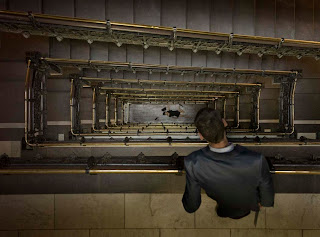Today (Wednesday, September 1) is “Ask a Curator” day, a worldwide “question and answer” session which will enable interested museum visitors to put questions to curators at over 300 museums around the world.
The organizers of this day are using Twitter to host “Ask a Curator”. You can find a list of participating cultural venues in the “who to ask?” section of the website
http://www.askacurator.com/, or simply follow the hashtag #askacurator to follow the questions other people are asking.
At the San Diego Museum of Art, John Marciari, Curator of European Art and Head of Provenance Research, will be fielding questions throughout the day: direct questions to him @SDMA on Twitter. Short answers will be posted on Twitter, with links to the fuller answers here.
_______________
From our Facebook page:
@Junvi Ola:
How and where private collectors acquire art pieces. Do they go to estate sales? Private art auctions? What if its a piece from another country? I'm eternally curious about this process!
John: "Private Collectors" is a pretty open-ended term, but I'm going to take it that you mean people who collect museum-quality art (i.e. art of the quality, condition, and importance that would hang on the walls of a museum). While there are a few cases of amazing finds at estate sales, those are the exception rather than the rule. Most collectors work with dealers and advisors, go to auctions (Christie's, Sotheby's, Bonham's, etc.), visit galleries, or occasionally buy directly from other collectors. If collectors buying at this level have a relationship with a museum, the curators will sometimes help advise them as well.
Export rules from other countries vary from country to country. The more important something is, the harder it will be to export it to the US. Major works, that is, would be run past a review board (which could include, for example, curators at a national museum), and they could be blocked from export.
_______________
@museodata:
What is the most difficult challenge for a curator? How do new technologies influence the curatorship task?
John: This isn't a terribly romantic view of curatorship, but to be honest, one of the greatest challenges comes in reconciling ambitions and budgets. It is still relatively easy to find great works of art that we'd like to add to the collection, but harder to put together the funds necessary to acquire them. Likewise, when planning an exhibition, one needs to keep in mind the huge costs involved in bringing works from other cities or other countries together.
As for technology: new technologies (websites, Facebook, iPhone applications, etc.) allow museums to share ever more information about the collection. Wall labels offer a few bits of information, but we know much more about any object than can fit on those labels, and the new technologies can make it available to those who are interested. New technologies in the conservation lab, conversely, are giving us ever more information. See, for example,
http://bit.ly/cJILsA
________________
What is your favorite piece in your museum's collection? And if I visit, where can I find it?
John: I thought that this would be a question asked today, and it's come in at least twice already. A common game curators play when visiting another museum is to ask two questions: 1. What would you take for your museum? 2. What would you take home? The first question really boils down to this: What is the most historically significant and/or rare object, one that would be a prized addition to a museum's collection? The second question is about personal taste: what would you like to live with? Usually, these turn out to be two different objects, but in the case of the collection here in San Diego, I'd probably choose the same for both: Giorgione's
Portrait of a Man. (The Venetian Renaissance is one of my particularly beloved moments in the history of art.) The panel is in our Italian Renaissance Gallery on the second floor. For an older blog post about the painting, see
http://bit.ly/9wysYI
_______________

































